Guitar harmonies can involve a lot of music theory and sound very technical, but you can easily improvise on any melody by using harmonies in 3rds. This is one of the simplest harmonizations you can use, and it usually sounds great.
Even if you’re not well-versed in music theory, harmonizing in 3rds is fairly easy and requires only basic scale knowledge. With the knowledge of what scale you’re playing and the difference between whole and half-tones, here’s how you would harmonize a passage:
To harmonize in 3rds on the guitar, first, identify the root note. Count up by 3 semitones – which is also 3 frets – until you arrive on your new note. This gives you the minor 3rd. If you count up by 4 frets instead, you’ll get the major 3rd. Remember, one fret is one semitone on the guitar.
This is the long and short of how you harmonize melodies on the guitar. A good way of conceptualizing it is to understand that a major third is 4 frets up from the root note and a minor third is 3 frets up from the root note. In another tutorial, we’ll talk more about harmonization using other intervallic relationships, but for now, let’s really dive into 3rds.
How to Harmonize in 3rds on Guitar – [The Easy Way]
For this section, we’re going to walk through how to harmonize in 3rds on the guitar in the easiest way that anyone can begin implementing right away.
For the section after, we’ll dive into more of the theory behind intervals, harmonization, major and minor scales, semitones, and whole tones, and how to use these concepts to your advantage.
Simply put, I’ve designed this article in such a way that you get the sauce – or the practical “how-to” – first and then the theory after.
Read through the whole article and you’ll be more than capable of not only creating the harmonies but also understanding them.
1) Identify the Root Note
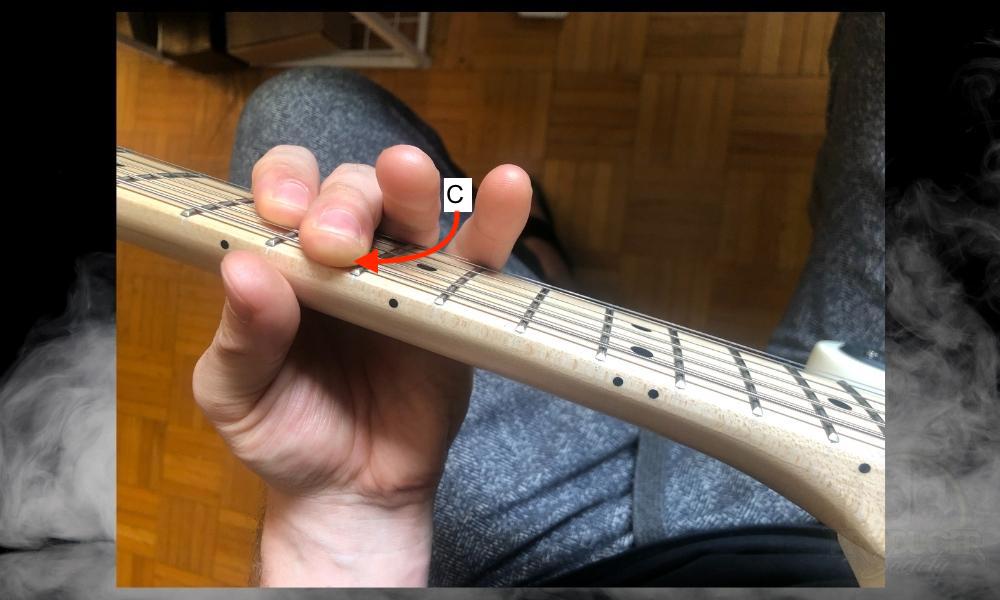
The first thing you want to do when finding major and minor 3rd harmonies on the guitar is single out the note that you’re trying to harmonize. In this case, we’ll choose C on the guitar which is on the 8th fret of the 6th string.
2) Count Up By 3 Semitones to Make A Minor 3rd
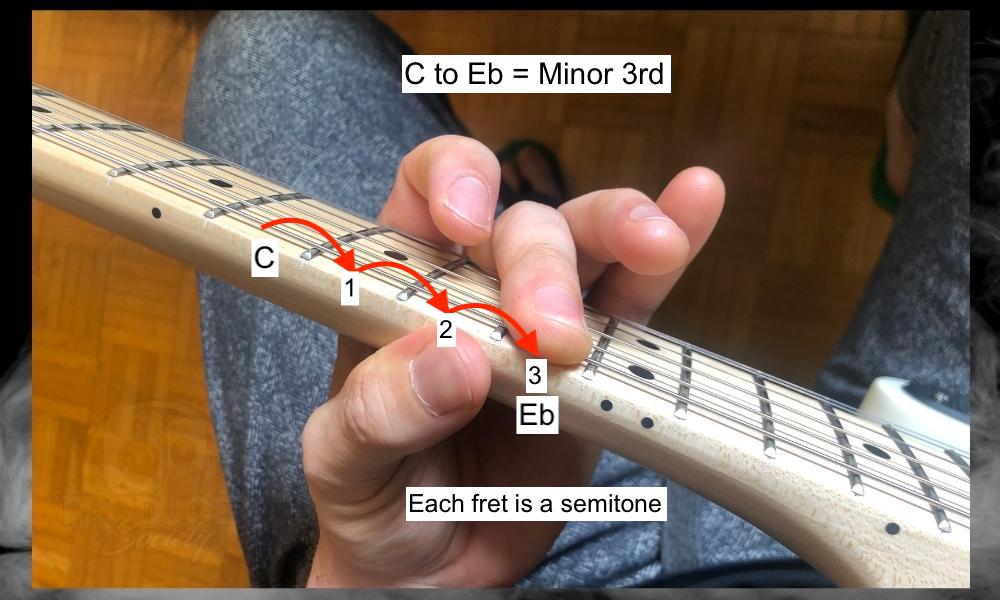
After you’ve identified the note, you want to move up 3 semitones – the equivalent to this is 3 frets – from the root. This will give you the minor third.
Tip:
Remember that on the standard guitar, one fret is always one semi-tone.
This “trick,” if you’d call it that, works for any note. In other words, moving by 3 frets from any one note is always a minor third, regardless of which note you’re starting on.
3) Count Up By 4 Semitones (2 Whole Tones) To Make A Major 3rd
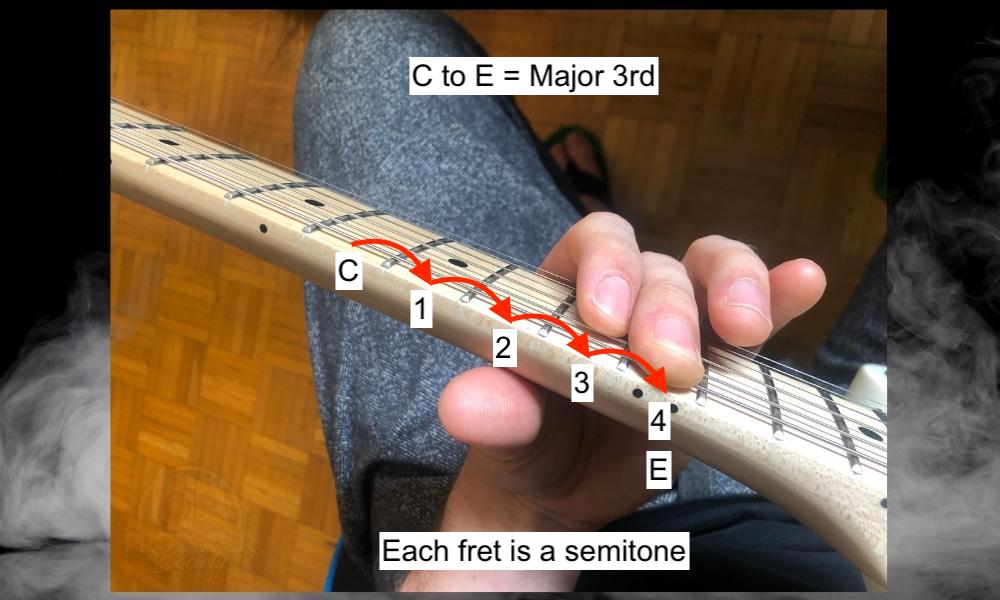
The same rules apply to making major thirds, although, it’s a bit different because the size of the interval is just one semitone larger. Take your root note and count up by 4 frets, and that gives you the major 3rd.
In this case, we’re starting on the C on the 8th fret of the 6th string. This brings us to the 12th fret on the 6th string, which is an E. And again, this rule applies anywhere on the fretboard. 4 semitones up from the root note will always give you the major 3rd.
What I’ve just described here is the easy way to quickly find major and minor 3rd harmonies on the guitar. The next step, however, is to find these same notes elsewhere on the guitar.
You may not like the way the harmony looks or feels when it’s played just 3 or 4 frets up, so instead, you can find these same notes on the adjacent string in a slightly different position.
Optional
4) Find the Same Notes on the Adjacent Strings
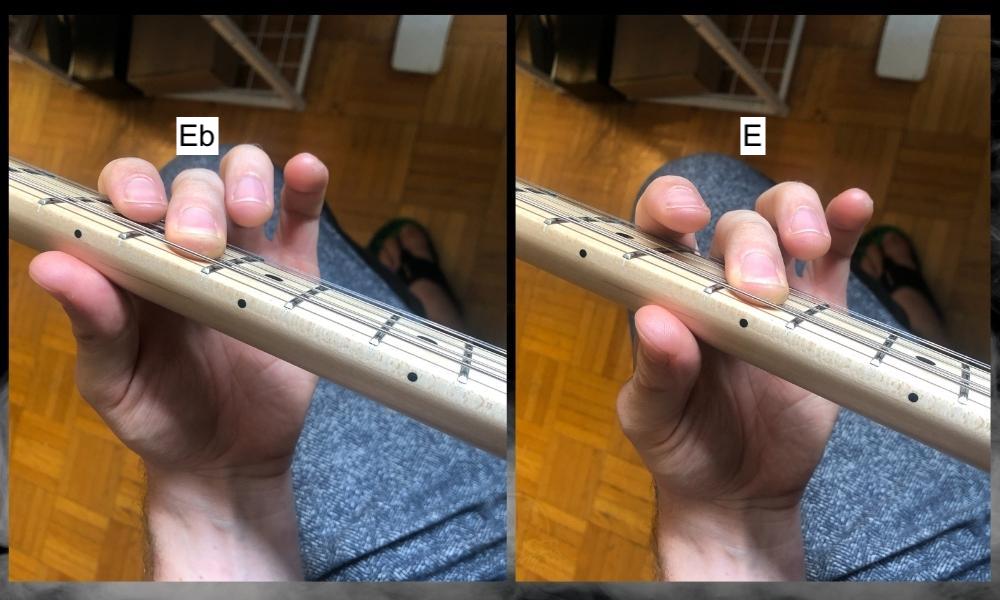
This part is fairly self-explanatory, but I think it’s worth mentioning because it’ll give you a slightly different sound and it’ll play differently as well.
After you’ve found your harmony on the same string but 3 or 4 frets up, depending on whether you’ve harmonized in minor or major 3rds, you just have to find those same notes but elsewhere on the fretboard, like what I’ve shown in the image above.
So now that you know the mechanics and the practical “how-to” of harmonizing in 3rds on the guitar, I’m going to dive into the theory a bit. The idea behind this is just so you actually know what this stuff is.
5 Tips for Harmonizing Melodies
1) Use the Modes of the Same Scale
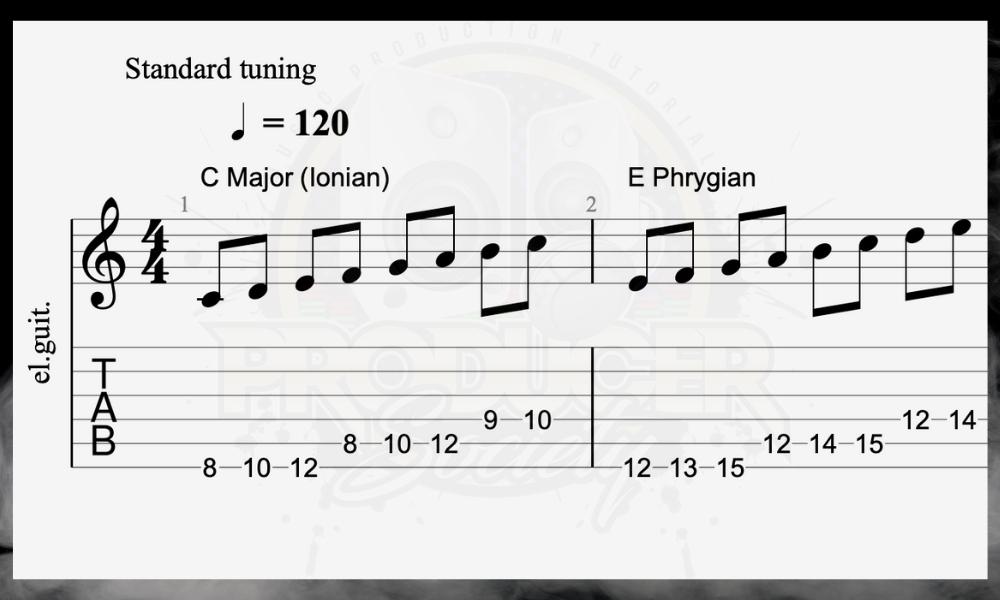
Because modes are technically just a scale starting from a different note, and having that note as its tonal center, you can use modes to quickly find harmonies. One such example would be the C Major Scale in relation to E Phrygian.
If we start on the E, that’s the E Phrygian scale, which is made up of the same notes as the C Major but we’re just starting on E as the tonal center.
If you play the notes of E Phrygian over top of the notes of C Major, it’ll sound great and perfectly harmonized. Check out the video down here to see how it sounds. It’s very Allman Brothers-esque.
Try the same thing with a key like D Major instead. So you would use F# Phyrgian overtop of the D Major scale.
2) You Can Also Transpose An Entire Passage By Just Switching the Key
| C Major ↓ | C ↓ | D ↓ | E ↓ | F ↓ | G ↓ | A ↓ | B ↓ |
| Interval Distance | Major 3rd | Major 3rd | Major 3rd | Major 3rd | Major 3rd | Major 3rd | Major 3rd |
| Number of semitones | 4 | 4 | 4 | 4 | 4 | 4 | 4 |
| E Major | E | F# | G# | A | B | C# | D# |
This is what I showed you earlier. To transpose to a new key, take the key or the scale name, and just transpose that root note by a major 3rd. In the case of C Major, going up by a 3rd would give you E Major.
So you would use the notes of E Major to transpose everything up by a major 3rd. You have to approach it differently if you don’t want to change keys.
Because you want the harmony to be consistent and consonant with the notes that you’re currently using then you would go up by thirds but use notes in the same scale. I’ll show you that now.
3) Use the Notes Within the Same Scale to Create Harmony
| C Major ↓ | C ↓ | D ↓ | E ↓ | F ↓ | G ↓ | A ↓ | B ↓ |
| Interval Distance | Major 3rd | Minor 3rd | Minor 3rd | Major 3rd | Major 3rd | Minor 3rd | Minor 3rd |
| Number of semitones | 4 | 3 | 3 | 4 | 4 | 3 | 3 |
| C Major | E | F | G | A | B | C | D |
In most cases, the better move for creating harmonies – at least that people want to hear – is to use the notes within the same key. Then just stack them on top of each other in the same way that you would if you were making chords.
And really, that’s all you’re doing when you create harmonies. You’re just making a chord but in a different way. A chord is just a harmony, and a harmony is really just a chord.
If you need to drill some of these basic music theory concepts, Mark Sarnecki’s books (which I always recommend) are where it’s at. In conjunction with the aforementioned Punkademic’s course, you can’t go wrong.
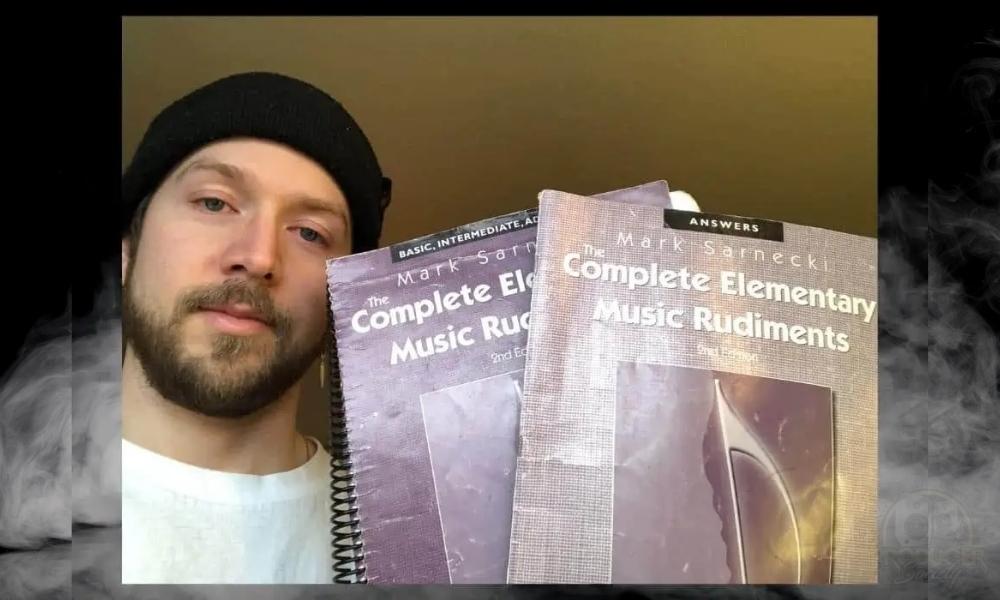
4) Use the 3 Semitone & 4 Semitone Trick To Quicky Create Major/Minor Thirds
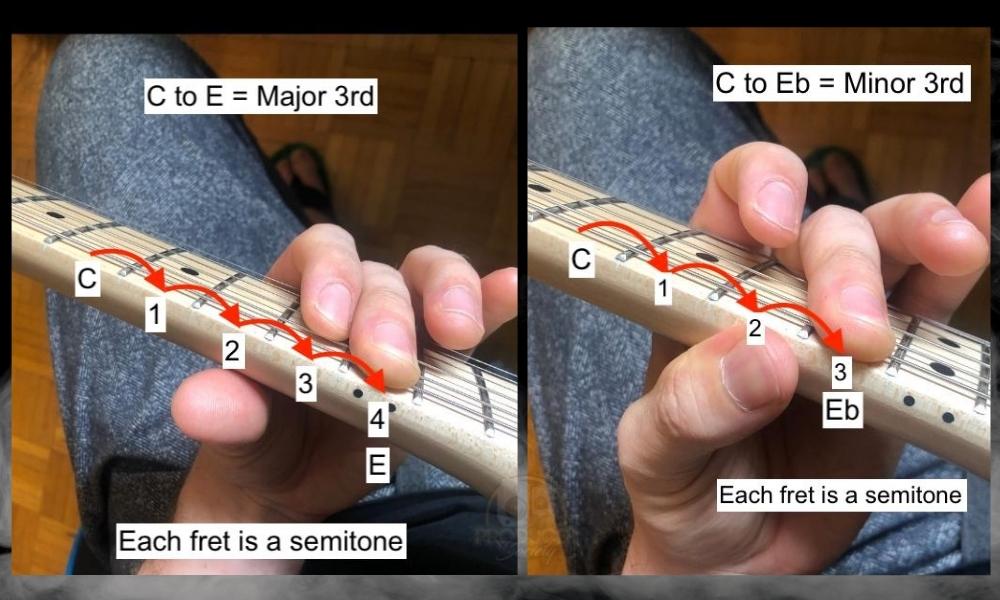
Go re-read the first part of the article considering I already explained everything there.
5) Use A Looper Pedal Like the RC-5 to Practice Creating Harmonies
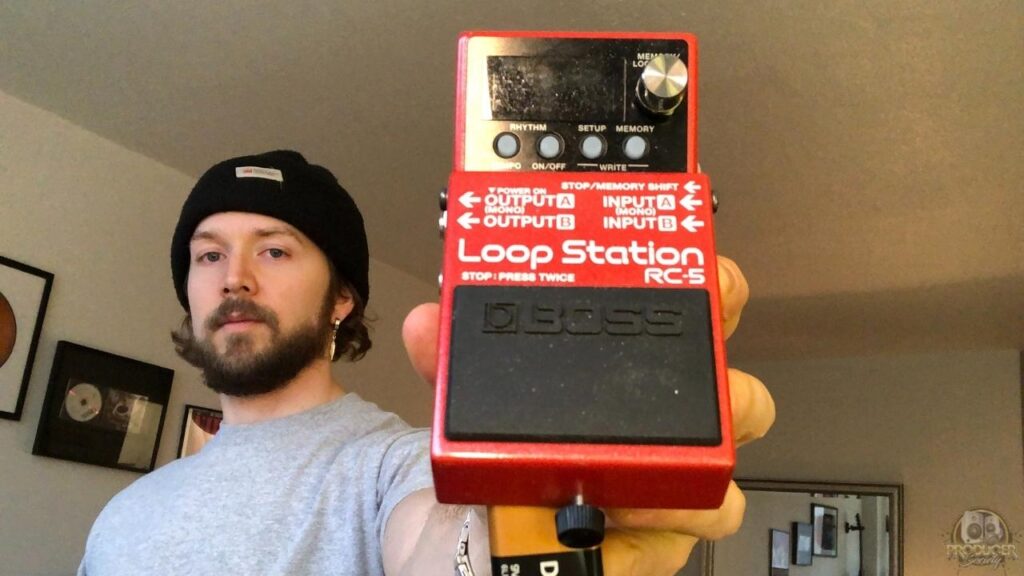
As I already explained in my guide on why triads are so important to learn, the Looper pedal is an incredible tool for practicing all kinds of things, and harmony creation is one of them.
You can use it to practice them by yourself (also my guide on that), or it can be used as a legitimate creative tool. A looper pedal can teach you a lot about music theory and lucky for you, I have a comprehensive and straightforward guide on how to use it too.
Harmonizing in 3rds on Guitar – The Music Theory
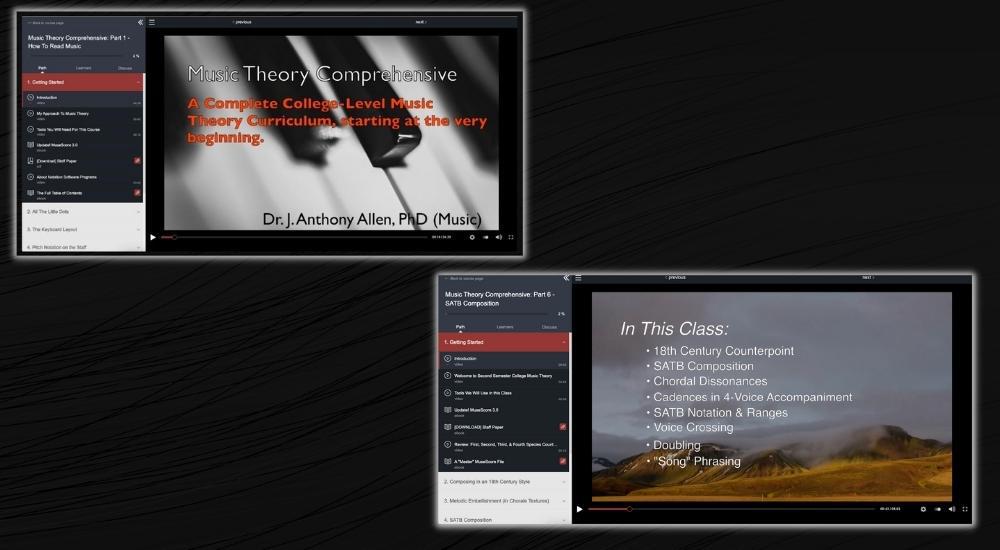
First things first, to understand how to harmonize on guitar rather than just implement it, you need to know what harmonization is. For a refresher just in case you’re new to music theory, Punkademic’s Music Theory course is a great place to start.
Especially if you like the instructor/student model (use the coupon code: “producersociety”). But I digress. Harmony in music refers to the relationship between two notes when played together.
For harmonization to happen, the notes played usually belong to the same chord group and have a diatonic relationship.
Not always, but usually they’re part of the same scale (part of the major scale, is what “diatonic” means). The relationship between two harmonizing notes depends on the interval between them.
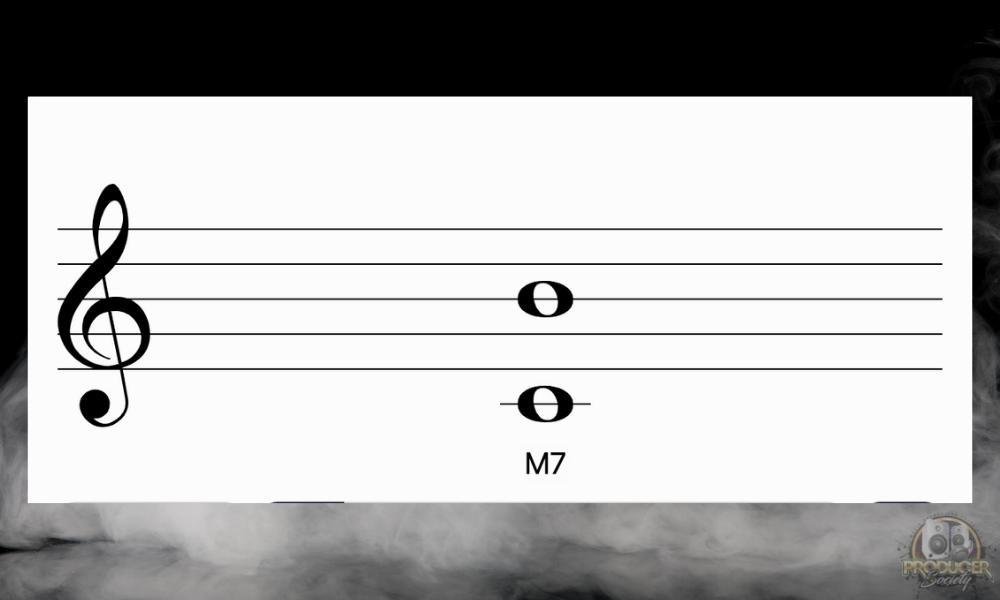
Think of intervals as the space between two notes – depending upon how much space there is, harmonies change and evolve, and so does the tonality.
The 3rd harmony, also called tertian harmony, is what I’m going to tell you how to do. It has an interval of three notes to create harmony. It forms the base for various classes of chords.

And it’s one of the most commonly found harmonies in both classical and modern music. Bands like Iron Maiden and Metallica are famous for using major and minor 3rd harmonies in a lot of their songs.
Especially to create a duality between the lead and rhythm guitar. And many modern bands have followed suit by adopting more guitar harmonies in their music. Anyway, let’s get into the theory behind major and minor thirds.
How to Harmonize Major 3rds on the Guitar
I’ll start with major 3rd harmonies, and I’ll use C major as an example. But remember, it’s the intervallic relationship that matters – this same technique can be applied to all major scales.
And in case you forget, remember that major scale intervals are commonly remembered as Tone- Tone – Semitone – Tone – Tone – Tone – Semitone (T-T-ST-T-T-T-ST).
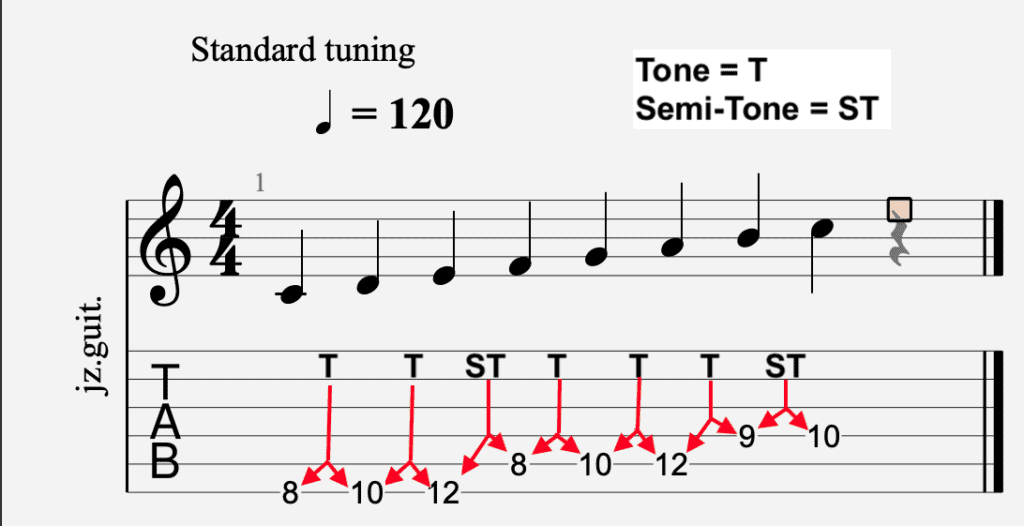
1) Write Down the Notes of Your Melody
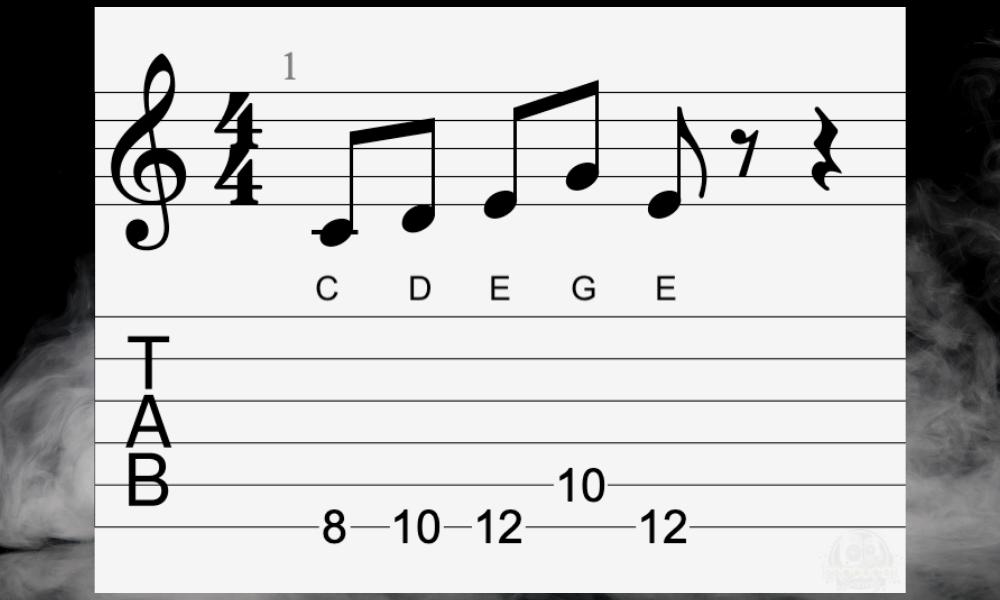
This should be the first thing you figure out when you’re trying to harmonize. It goes without saying that it’s difficult for any musician to harmonize if you don’t know what you’re harmonizing against – the root melody will define the harmony.
Figuring out the notes of your melody will help you understand the base note of the piece as well as the key in which you’re going to harmonize. Let’s take a simple melody with these notes as an example: C D E G E.
2) Count Up by 3 With the Root as 1
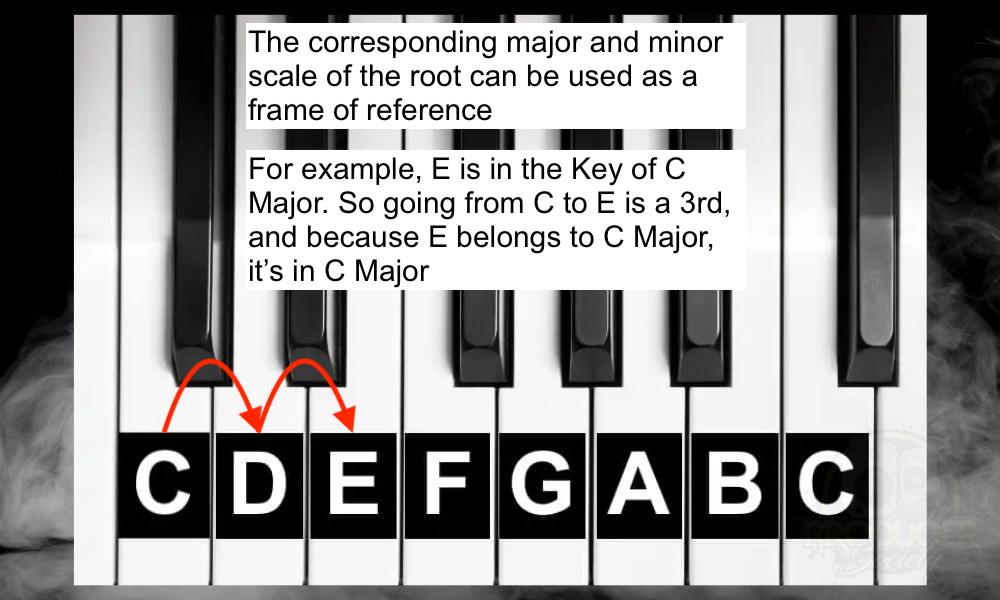
So our base note is C. That C is going to be our root note by which we’re comparing and contrasting everything else.
As you move up the C major scale, counting in threes, your third note is an E (the major 3rd). So when you’re harmonizing in 3rds, an E note will be the harmony for a C note.
Now, if we want to harmonize every single note as a major third, we could just transpose the entire passage up by one major 3rd, which would put us in the key of E Major. I’ll show you that now.
3) Use the Major Scale of the Root as a Frame of Reference
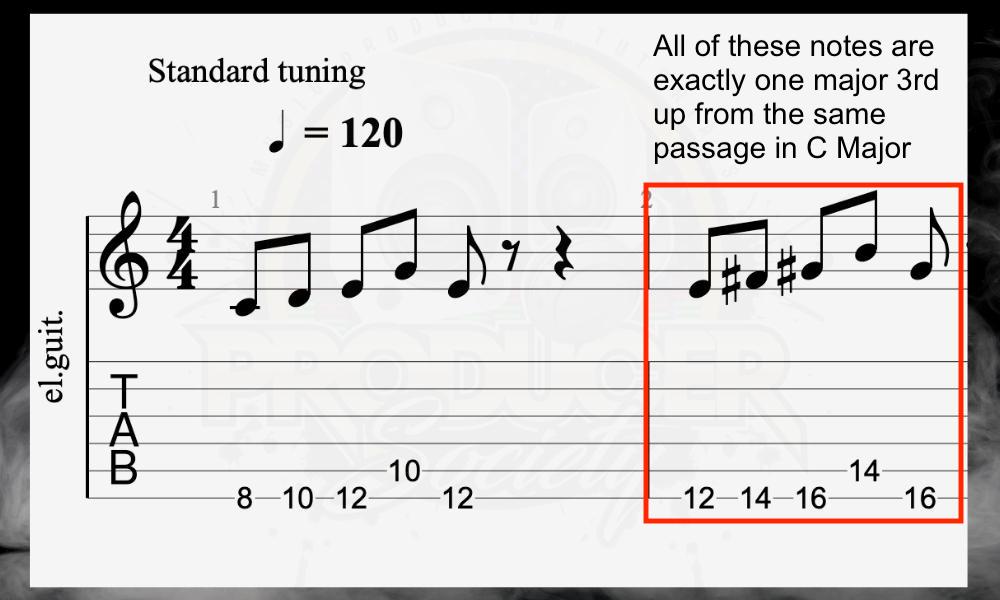
If we want to move every single note up from the original passage by a major third, we have to compare the root note’s corresponding major scale. Here’s how that would look:
C ⇒ E = Major 3rd
C to E is a Major 3rd because, in the key of C Major, E is natural.
D ⇒ F# = Major 3rd
D to F# is a Major 3rd because, in the key of D Major, F’s are sharp – F#
E ⇒ G# = Major 3rd
E to G# is a Major 3rd because, in the key of E Major, Gs are sharp – G#
G ⇒ B = Major 3rd
G to B is a Major 3rd because, in the key of G Major, B is natural
E ⇒ G# = Major 3rd
E to G# is a Major 3rd because, in the key of E Major, Gs are sharp – G#
4) Add or Subtract an Accidental to Make it Major Depending on the Key
Accidentals are when you play a note outside of the key of the melody that’s indicated by the key signature at the start of the staff.
For example, all sharp notes (A#, C#, D#, F#, G#) will be accidentals inside the key of C major, which is a natural scale with only natural notes (meaning they have no sharps or flats on them).
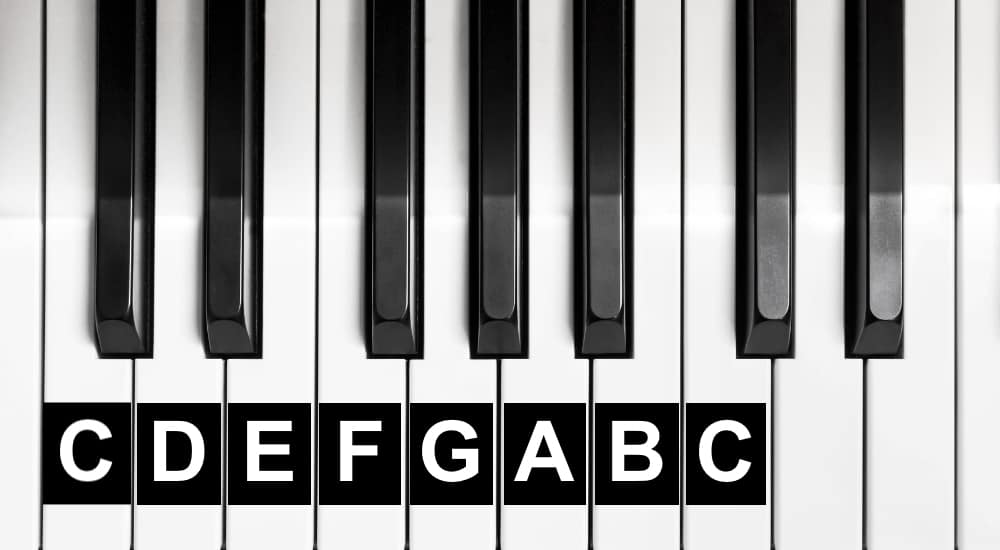
Another example is the note G. It’s an accidental in the case of the E major scale because G# belongs to the scale. If you wanted to make a minor third using these same notes, you would just make the G natural instead. Why? Because in the Key of E Minor, Gs are natural.
Don’t fret about it if you find yourself counting up or down the scale and coming across an accidental. Simply add or subtract steps to the accidental and make it a major. For instance, the G major scale would have an F note as accidental.
Also, recall what I showed you earlier. To determine whether an interval is a major or minor 3rd, count if there are 4 semitones between the two notes. If there is, it’s a major 3rd. If there are 3 semitones between the interval, it’s a minor third.
Simple. Add sharps and flats accordingly to make the interval meet this requirement depending on whether you’re going for a minor or major interval.
In the case of G Major, add half a step to the F and you get F#, which belongs to the G major scale. If you want to make the distance between a G and F a minor third, keep the F a natural, because, in the key of G Minor, Fs are natural.
This is, essentially, the theory behind major and minor intervals. For the sake of simplicity, however, I recommend sticking to the 3-semitone and 4-semitone trick for figuring out whether something is a major or minor interval.
An Example of a Harmony in 3rds in a Major Key
There are many famous examples of 3rd harmonies in a major key, especially in popular rock music.
A) “Brown Eyed Girl” by Van Morrison
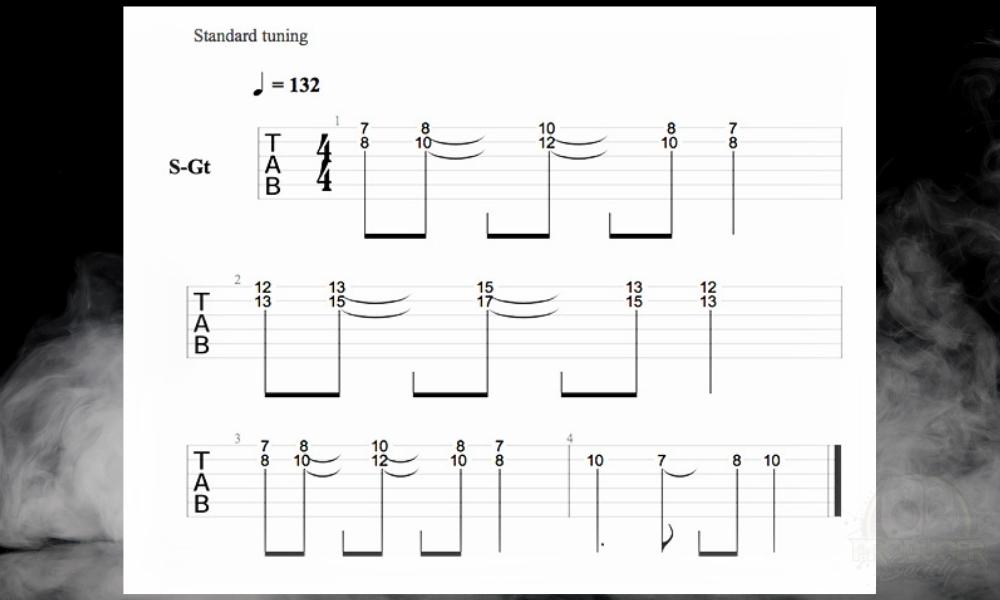
Brown Eyed Girl by Van Morrison has one of the simplest, catchiest, and easy-to-play tertiary harmonies I’ve heard. It’s a great starting point for learning to play harmonies on a single guitar, by playing two notes simultaneously.
This harmony is in the key of G major, using double-stops to harmonize using just a single guitar. It goes across the scale and then harmonizes using the C major scale for the second chord.
Now think about how it sound if you were to play each note separately, that is, one person playing the 2nd string and then the other person playing the 1st string. This is also harmony in 3rds.
How to Harmonize in 3rds Using the Same Key
What if you want to create harmonies in 3rds but it actually sounds good? If you tried playing the harmonization I showed you earlier, C Major to E Major, you probably noticed how dissonant it sounded.
It’s because every single note had been transposed by a major 3rd exactly. But the thing is, most harmonies don’t really work like that, because that is a transposition of a melody into a different key.
If you want to harmonize a passage similar to the way the guys from Iron Maiden, Metallica, The Allman Brothers, etc, you’ll want to harmonize the notes using the same scale and the same key.
And this is pretty straightforward. If you understand what I’ve taught you thus far, just follow these simple instructions.
Assuming that you’ve written down the notes for the base melody, simply count up in 3rd intervals using the same key/scale to find the proper note.
If you do this for all the notes of your piece, you will have a harmonious melody in your hands. Taking the above melody as an example, count up each note by the third, following the scale:
C ⇒ E (4 semitones) = Major Third
D ⇒ F (3 semitones) = Minor Third
E ⇒ G (3 semitones) = Minor Third
G ⇒ B (4 semitones) = Major Third
E ⇒ G (3 semitones) = Minor Third
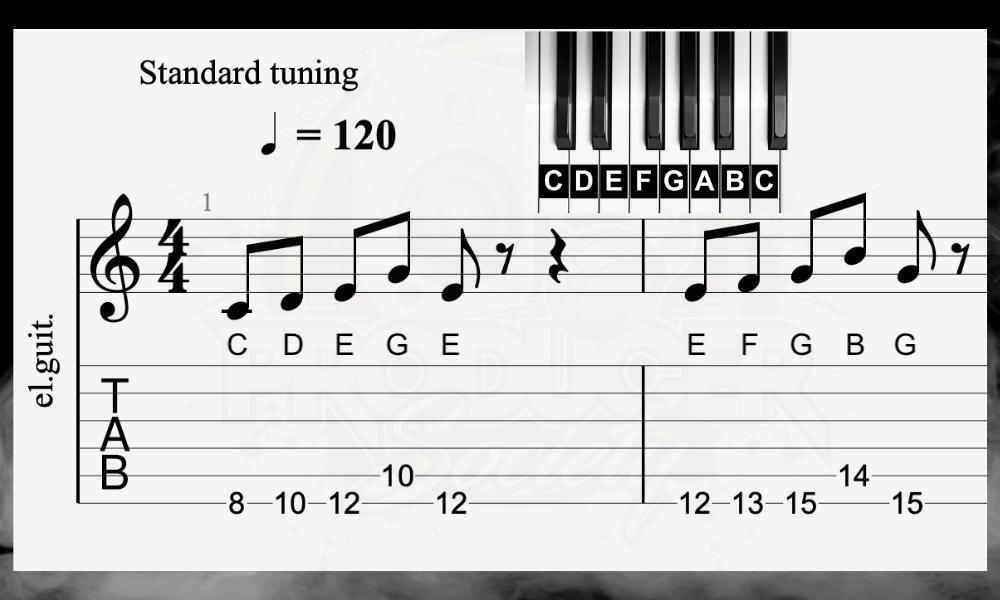
Here are the final harmonized notes: E F G B G. This harmonization consists of a mix of major and minor third harmonies which you can hear in the video down below. It’s worth explaining again, why this is the case.
The root note is always the scale or the frame of reference for determining whether the harmony is major or minor (the same thing goes for diminished and augmented as well, but we’ll save that talk for another day).
For example, D to F is a minor third, because, in the key of D Major, the F note is actually sharp (F#). But in this case, the F doesn’t have an accidental, so that makes it one semi-tone smaller, which is therefore minor instead.
Another useful way of explaining it is the following: if we used the key of D Minor instead of D Major as a frame of reference, this would give us the minor third interval. The reason is that in the key of D Minor, F doesn’t have an accidental. It’s just F-natural.
Remember that a lot of music has to do with what sounds good instead of simply sticking to theory. Theory acts as just a guideline and a library of terms and vocabulary for communication – an understanding of music theory that I learned from Punakdemic.
How to Harmonize Minor 3rds in the Same Key on the Guitar
If you’re coming to this section after you’ve mastered harmonizing major 3rds, you already understand the basics of what you need to do. As I said before, the scale that you use as your frame of reference is where the sauce is, metaphorically speaking.
The only significant difference between harmonizing in major and minor 3rds is the scale that you need to harmonize in – everything else remains almost the exact same.
1) Write Down the Notes of Your Melody
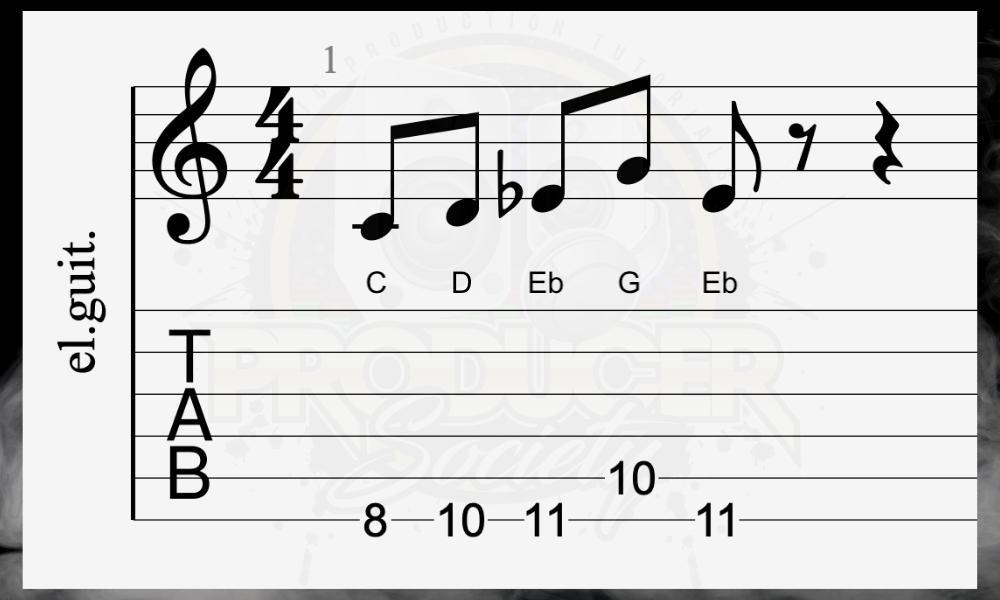
The building blocks of any harmony are the root notes and the notes over top – the harmony. Similar to the major scale harmony, writing down the notes of your melody will help you figure out what notes you actually have to use.
2) Count Up by 3 With the Root as 1
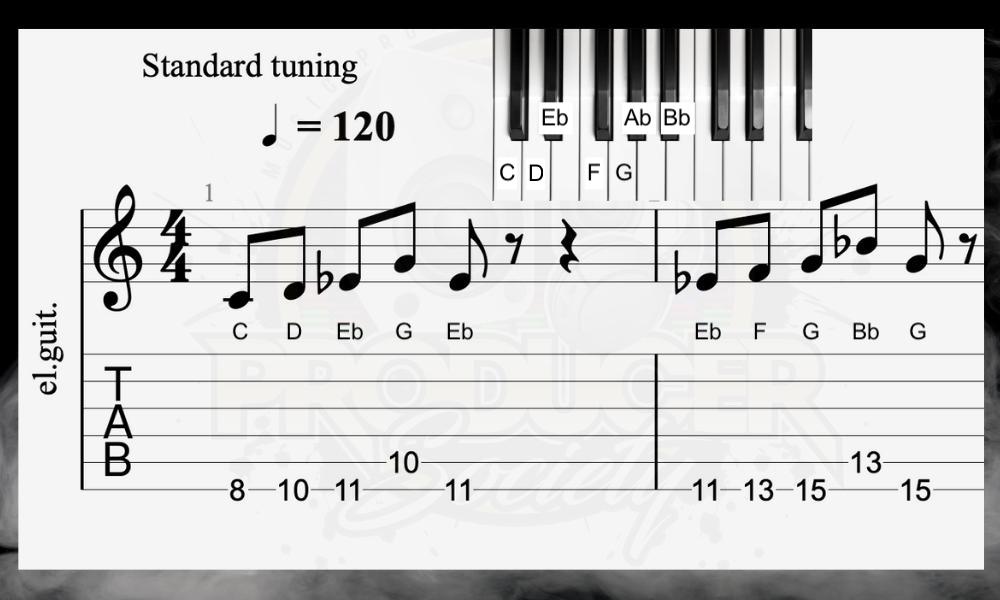
If we count up to 3 using notes the notes of the C Minor scale, C, D, Eb, G, Eb, we get the following notes:
C ⇒ Eb (3 semitones) = Minor 3rd
D ⇒ F (3 semitones) = Minor 3rd
Eb ⇒ G (4 semitones) = Major 3rd
G ⇒ Bb (3 semitones) = Minor 3rd
Eb ⇒ G (4 semitones) = Major 3rd
So here’s what that sounds like:
3) Use the Minor Scale of the Root as a Frame of Reference
Continuing with the example I used in the last point if the root note of your melody is C, the only difference between harmonizing in major or minor depends on the scale you’re referencing.
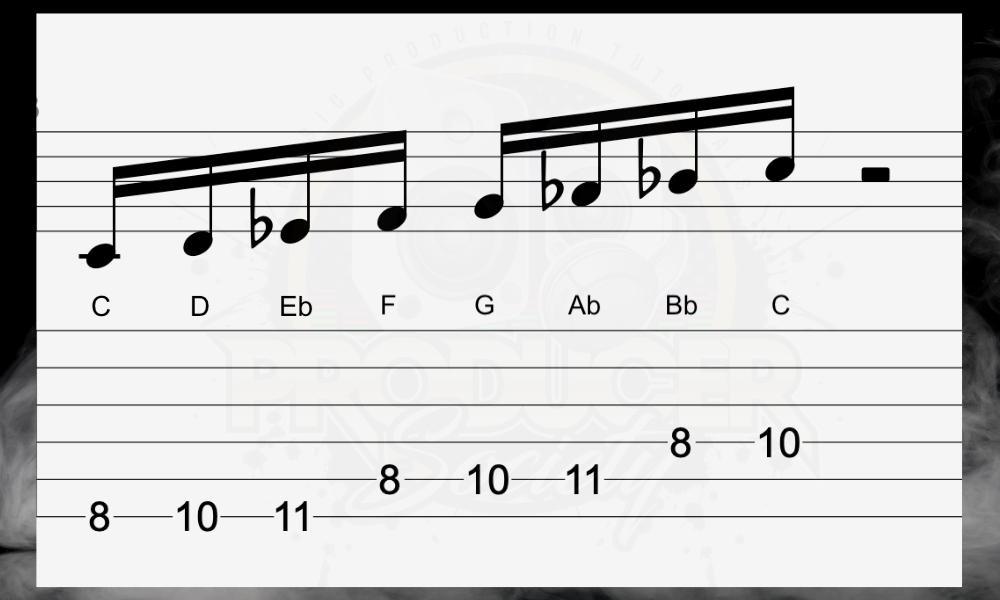
The root note by itself could go into the C Major or C Minor key, and since we’re harmonizing in minor, we take the C Minor scale as a reference and use other notes from this scale.
4) Add or Subtract an Accidental to Make it Minor
This step is similar to what you would do when harmonizing on a major scale. If you come across an accidental while figuring out 3rd harmonies, add or subtract a half step to make it fit into the rest of the key signature.
Remember that you’re using the scale of the root note to figure out which note is a major or a third up from there. If you’re using the notes of the scale, you don’t have to worry about much.
Example of A Harmony of 3rds in a Minor Key
A) Master Of Puppets by Metallica
Metallica is another metal band that’s known for using harmonies frequently in their music. The entire Master of Puppets album features several harmonies, but one of the most popular is from the lead single.
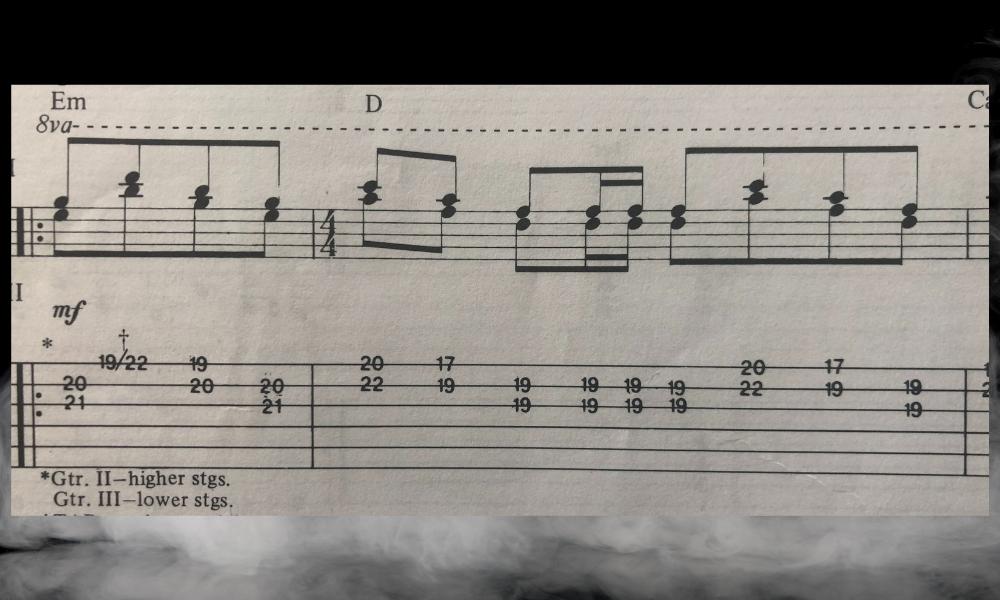
The bridge section of “Master of Puppets” (this link takes you to the exact part of the song) features a slowed-down, ballad-style harmony in the key of E minor.
James Hetfield plays the root melody, while Kirk Hammett plays the upper harmony. It’s a beautiful melody, but it does use some accidental notes to give it a more ominous feel.
Anyway, I hope this was helpful to you. Do me a solid favour and share it on your social media if it is. Or you can even write to me on the contact page if you’d like.
Important Things to Note About Harmonizing in 3rds
1) Augmented, Perfect, and Diminished Intervals Work Similarly
While I discussed 3rd harmonies, other harmonies like the perfect fifth (heard in The Allman Brother’s “Jessica”) also work in the same way, although, they are a bit different. We’ll talk about these intervals in another article.


 Written By :
Written By :
